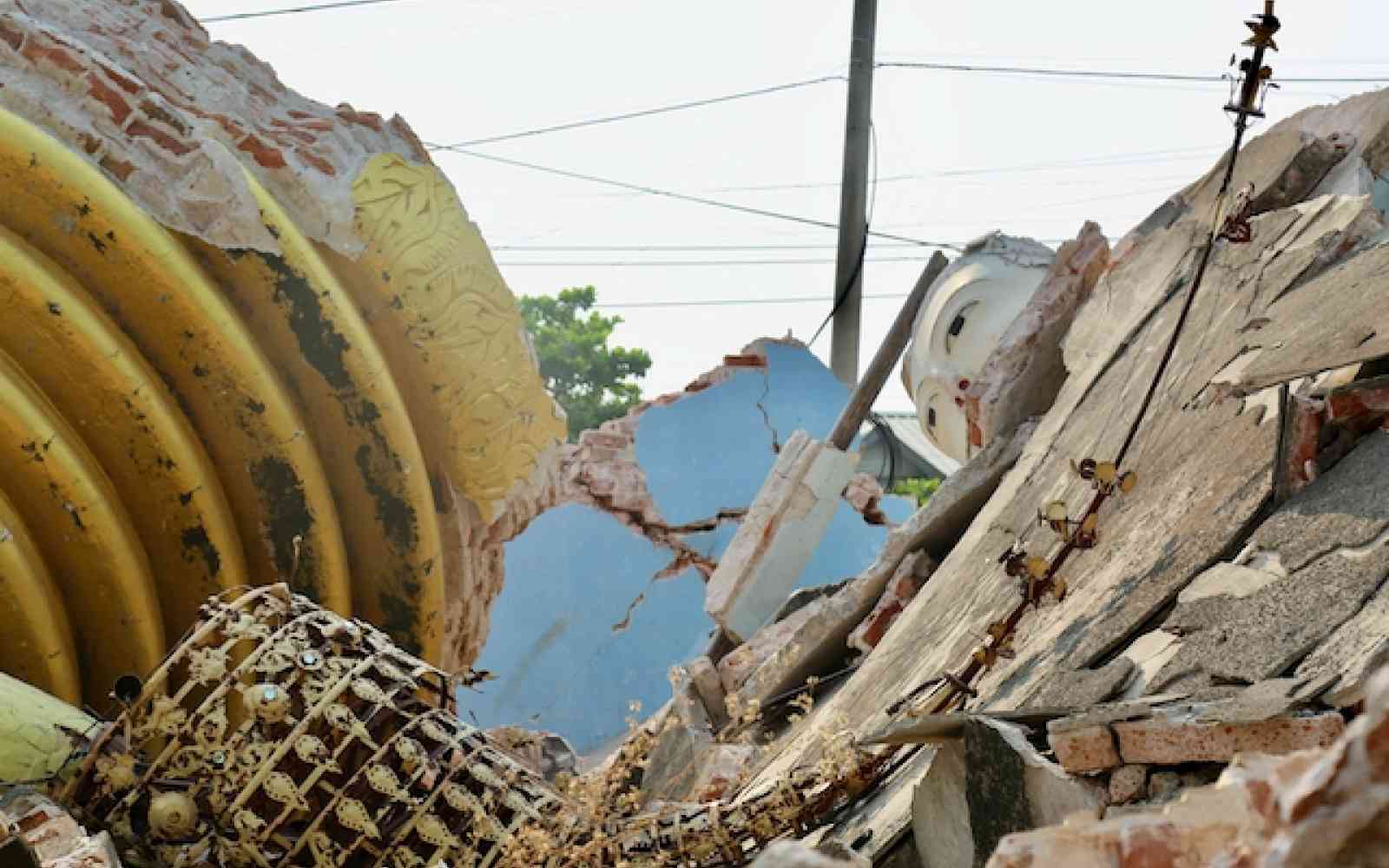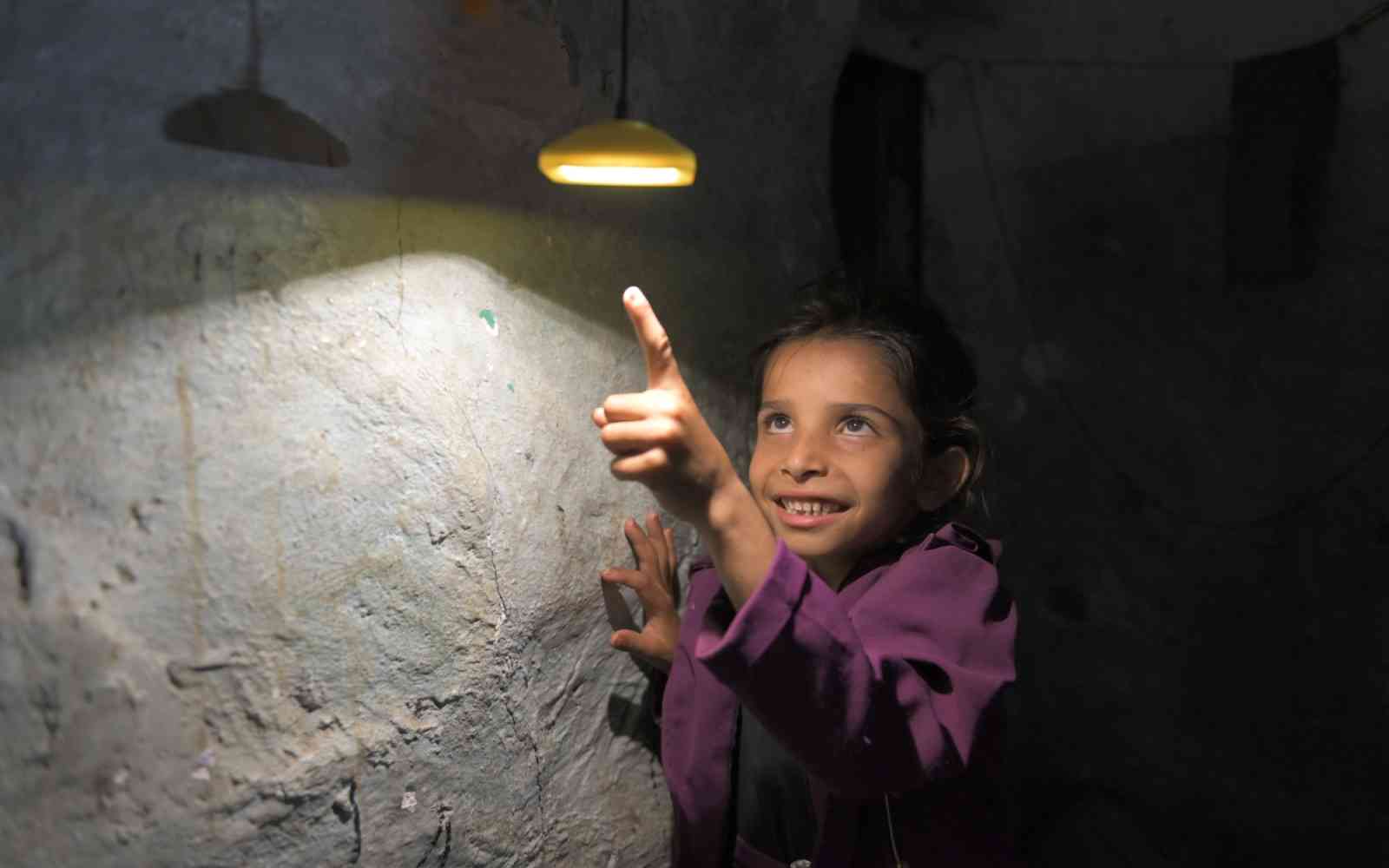The United Nations Office for Project Services (UNOPS)
Renewed hope for earthquake victims in Nepal

On 25 April 2015, a 7.8 magnitude earthquake struck Nepal, levelling parts of the country. For many people in this mountainous country, it’s a day they’ll never forget.
Baburam Sarki was at home with his family in Depche Danda, Tanahun when the earthquake started.
"Initially, I thought that a bomb exploded somewhere because of the sound," said 66-year-old Baburam.
"We ran out of the house as quickly as we could. Right after, our house fell down – we saw everything destroyed in front of our eyes."
In the aftermath of the earthquake, nearly 9,000 people were killed and more than 22,000 people injured. Approximately 1 million homes were damaged or destroyed.
I stayed there until the earthquake subsided. Then I ran back home just in time to see my house get damaged and our dreams get shattered.
Sita Pariyar remembers the aftershocks that followed the initial earthquake.
"When the second earthquake struck, I was in a nearby forest collecting firewood," said 60-year-old Sita from Gurdung Kharbari, Tanahun.
"I stayed there until the earthquake subsided. Then I ran back home just in time to see my house get damaged and our dreams get shattered."

Rebuilding shattered dreams
The Government of Nepal provided an initial relief fund so that people who lost their homes could build a temporary shelter. However, the remoteness of some villages and damage to public transportation infrastructure made getting an accurate count of earthquake victims difficult. This led to delays in distributing relief funds – and later, financial assistance to rebuild.
To address this, the Government of Nepal initially engaged UNOPS to assist with comprehensive household censuses and damage assessment surveys in 14 of the most severely affected districts. More than 870,000 households were surveyed. So far, more than 600,000 people have received the first instalment of funds to rebuild their homes.
But Baburam and Sita's district was not part of that initial survey.
The Government of Nepal later decided to conduct surveys in an additional 17 districts to identify earthquake victims and verify damage. With support from UNOPS, the Central Bureau of Statistics deployed more than 500 teams, which included an engineer and a social mobilizer, to implement these surveys.
Dreaming of the future
After the earthquake completely destroyed his home, Baburam lived in a temporary shelter for almost two years.
"I had lost hope," said Baburam, who shared the shelter with his wife and two physically disabled children.
Thanks to the recent UNOPS supported surveys, Baburam’s hope has returned.
Like Baburam, Sita has been living in a temporary shelter in with her husband since the earthquake rocked the country. Worried that she wouldn’t be able to rebuild her home, hope reawakened in her thanks to the new survey.


“For me, the surveyors were angels,” said Sita. “They came to put ointment on a wound that hasn’t healed since that cruel earthquake.”
Now eligible for housing assistance, Sita dreams of building a new home soon.
Project details
With funding from the United Kingdom’s Department for International Development (DfID), UNOPS supported the Government of Nepal and the Central Bureau of Statistics by providing logistical and operational support. This included procuring equipment and resources, as well as hiring and training census takers to help implement the verification surveys in an additional 17 earthquake-affected districts in the country: Lamjung, Chitwan, Khotang, Tanahun, Syangja, Palpa, Baglung, Gulmi, Solukhumbu, Kaski, Parbat, Myagdi, Arghakhanchi, Nawalparasi, Bhojpur, Dhankuta and Sankhuwasabha.













